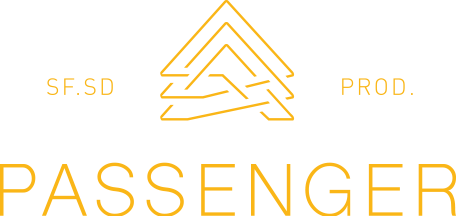Behind-the-Scenes Breakdown: Face It TOGETHER Sioux Falls
Face It TOGETHER Sioux Falls is a revolutionary, highly collaborative, community-based approach to helping people with drug and alcohol addiction get well. As part of the Bush Foundation’s Bush Prize for Community Innovation project, Passenger helped tell the story of the incredible work Face It TOGETHER is doing to change this region by helping others solve the disease of addiction.
Rather than just sharing the video online, we wanted to dig a little deeper into the behind-the-scenes work that went into making this short film. To do that, we sat down with Passenger director Joe Hubers and producer Andrew Reinartz to talk about the creation of the Face It TOGETHER piece.
How would you describe the preparation process for this film?
Joe: We started by going out two at a time to conduct site interviews. So that duo would conduct the interview and take some time to daydream about what might work well creatively. Then we all met together to discuss how we could make it a possibility, both technically and logistically.
Andrew: Part of how we do that is to come up with the “dream” aesthetic and then figure out a way to make that work within the number of days we have available, the time of year we’re shooting, the equipment we have, the budget we’re locked into.
On a technical level, this short film has sort of a gritty feel to it. What did you do that was unique for this piece compared to the other Bush videos?
Andrew: We actually used a different camera from the rest of the films in this series. Technically-speaking, we used a lower-quality sensor because it was a little bit better for run-and-gun shooting, and we wanted a more gritty, raw aesthetic.
What were some of the challenges you faced along the way?
Joe: I think Face It TOGETHER was the last one we shot. So the time factor was big. You become very aware of looming deadlines, so we knew we had to make the right decisions quickly.
As far as the story goes, addiction is a sensitive topic. So we wanted to come in educated and be able to not offend anybody with ignorance.
Andrew: Especially with Face It, because their whole model is unique. They use some unique language and explanations and we really wanted to use their voice, not the cliché types of stories and language you see with addiction treatment. They were pretty clear in explaining those differences to us right out of the gate.
Joe: And that really helped because it gave us some pretty clear parameters on how to talk about addiction.
So how did you start that conversation? What steps did you take to make sure you truly and accurately told Face It TOGETHER’s story?
Joe: Honestly, a lot of it meant just starting the conversation by saying “Look, I’m probably going to say some pretty stupid things right now because I don’t know how to talk about addiction, so let’s just talk and you tell me what I need to know and how to say it.” And Julie, Face It TOGETHER’s executive director and the main subject of this piece, was very gracious, so if we said something that wasn’t in line with how they view or describe addiction, she just corrected us and we learned from it.
Andrew: And that happened from the pre-interview all the way through the end of filming. We were very open to correction and instruction so we could make sure we were getting it right.
Joe: In terms of figuring out how to visually tell the story, we use the pre-interviews to learn about the person or people involved. For example, Julie is into running, and that makes for an interesting metaphor. Then we learned that Face It TOGETHER actually uses that metaphor—in fact, they just recently had their annual March Into The Light recovery walk. So as we dug that idea out of the interview process, the concept for the film became pretty clear.
---
There’s a look at some of the creative process behind the Face It TOGETHER Sioux Falls film in the Bush Prize for Community Innovation series. We’ll have more behind-the-scenes breakdowns of Passenger’s narrative short films coming soon.
